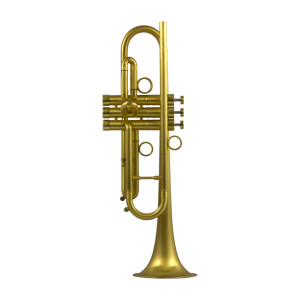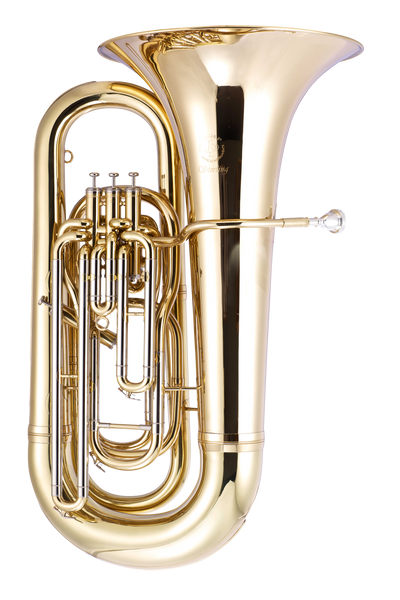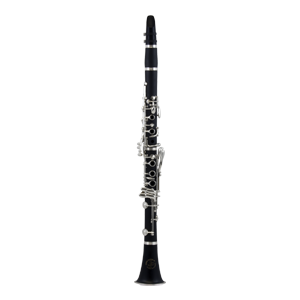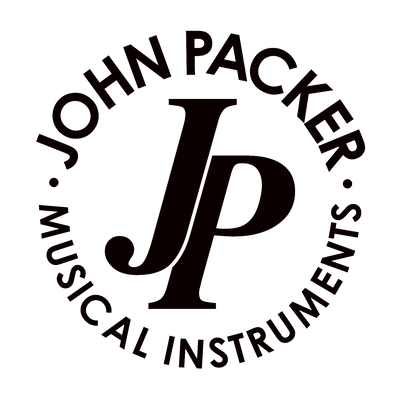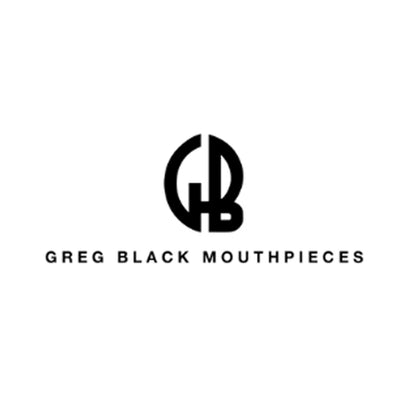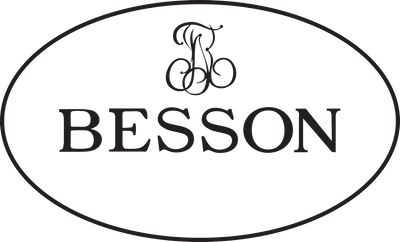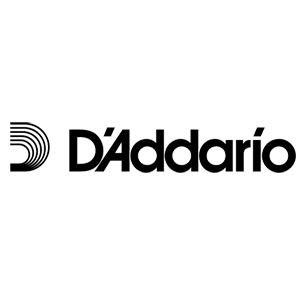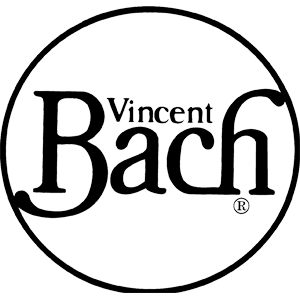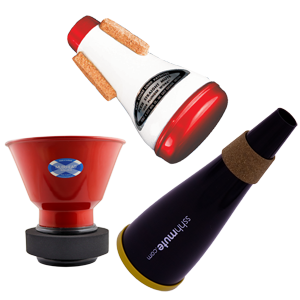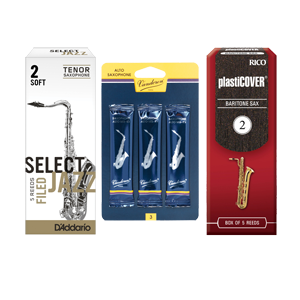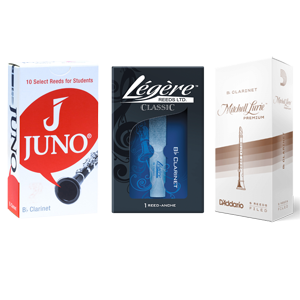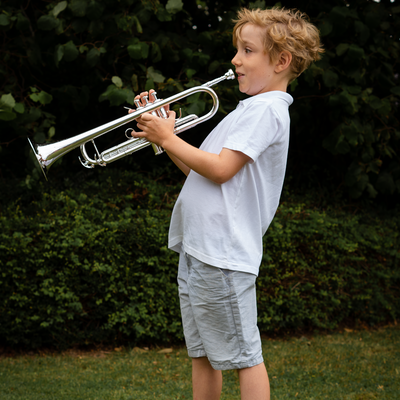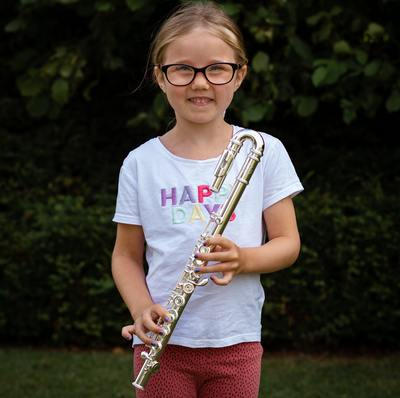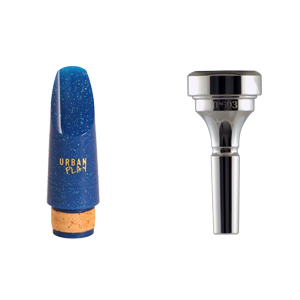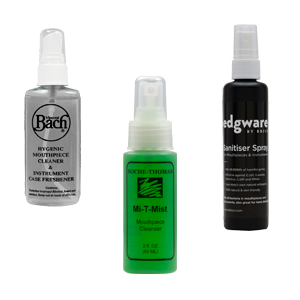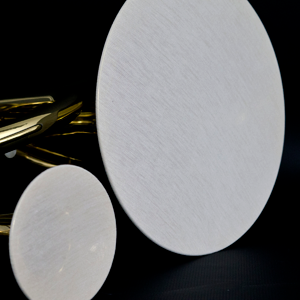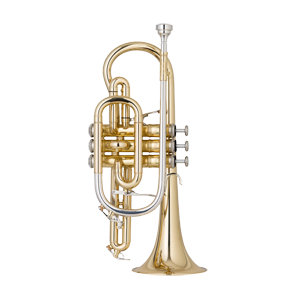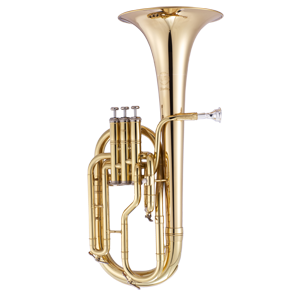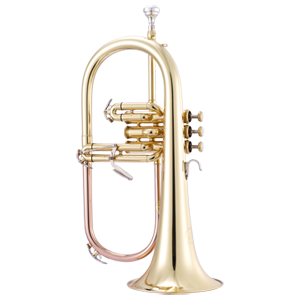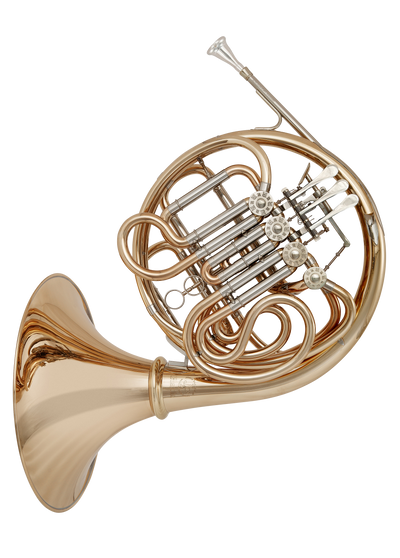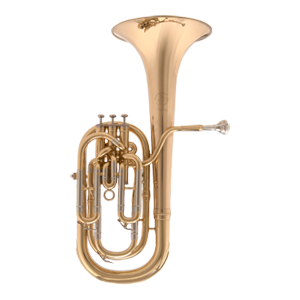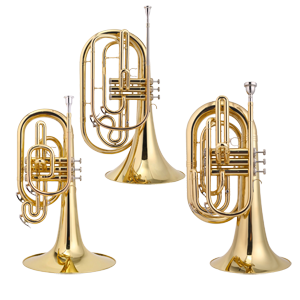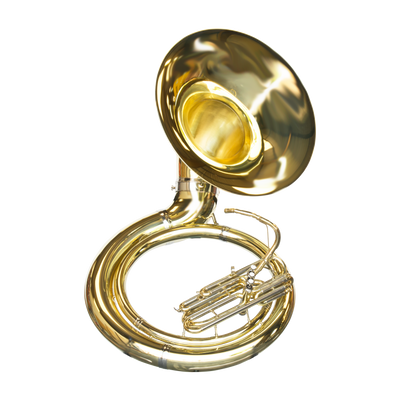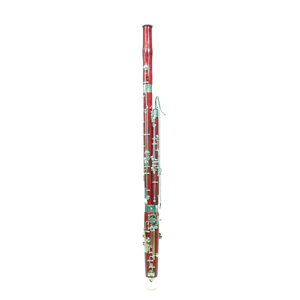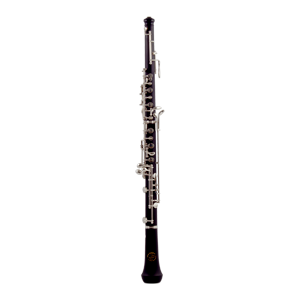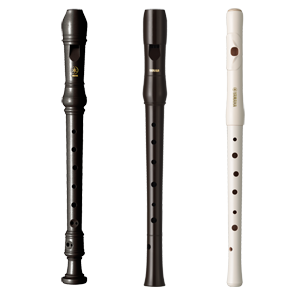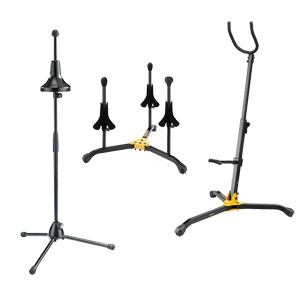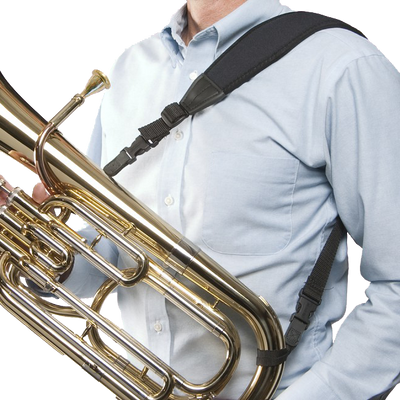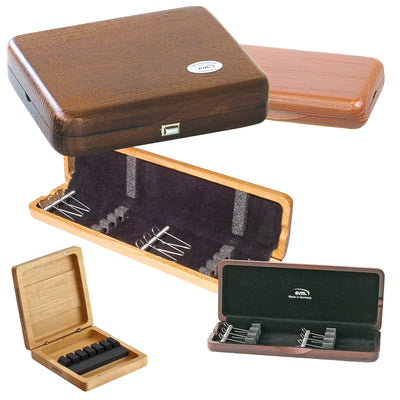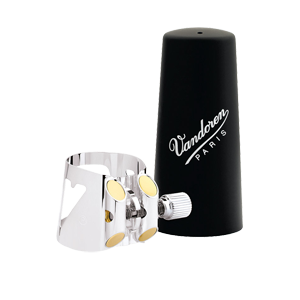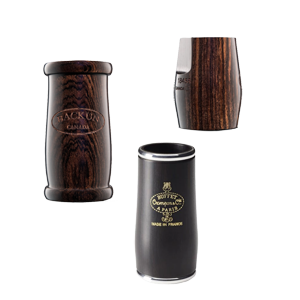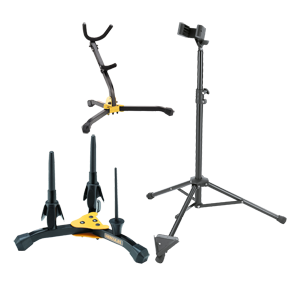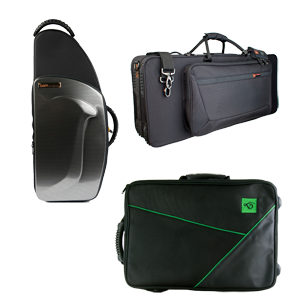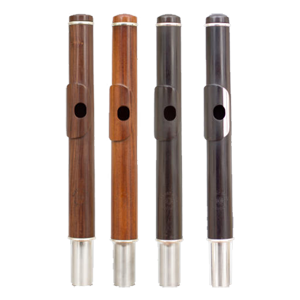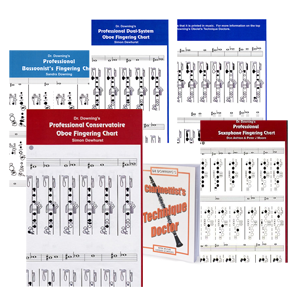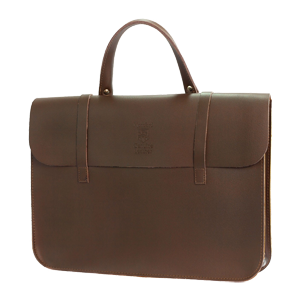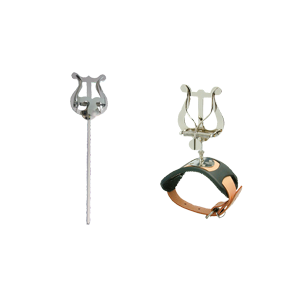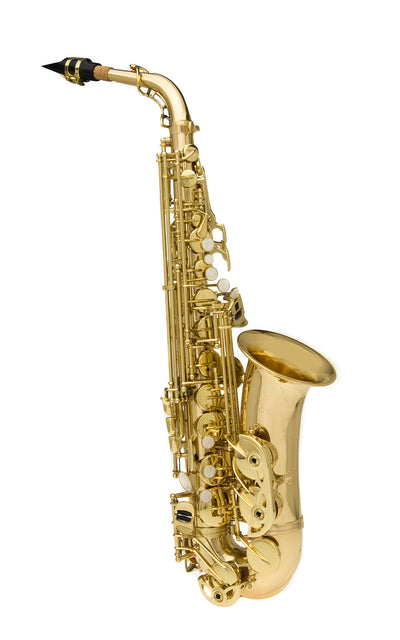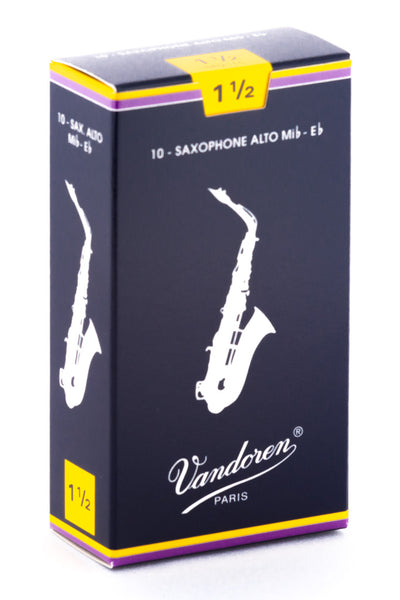Buyers Guide for French Horns

Purchasing a French Horn can be a very confusing issue as there are many different options to consider. Whether you are a complete beginner, amateur player, teacher or professional player our Brass Department staff will be able to help you to purchase the right instrument that suits your budget and playing ability.
When choosing a new instrument it is very important to keep an open mind and to consider all the options available. Your final choice of instrument needs to be comfortable to hold, easy to play, versatile and, importantly, it must cater for your future playing aspirations as well as the standard that you are now. Buying one that is a) the only one you can afford or b) the one that sounds best from the description in a brochure or c) the one that you have been told to get may well mean that you don’t get the most appropriate instrument for your needs. Always consider all the options that are available.
Types of French Horn
| Type | Key | Application |
|---|---|---|
| Single 'F' horn | F | Considered to have the ‘traditional’ French horn sound but due to its 12ft tubing is very difficult to pitch in the higher register as the notes are very close together. Some teachers prefer these for novices as dealing with this difficulty makes the player adept at pitching at an early stage. Our John Packer single ‘F’ Kinder Horn (JP162) is wrapped up very small and is ideal for children. |
| Single 'Bb' horn | Bb | Easier to pitch in the upper register due to its 9ft tubing but can sound more like a trombone. Our single ‘Bb’ Kinder Horn (JP161) is again ideal for children. There are a couple of notes in the very low register, which are not achievable on the Bb horn. Some teachers prefer these horns because it is easier for the novice to progress quickly. The single ‘F’ and single ‘Bb’ French Horns have some fingerings in common with each other namely A, Bb, B and C, but with the remaining notes you have to use different valve combinations. Single horns are also available in a full size which are used by adults or players who prefer using a lighter weight instrument rather than using a full double horn where the repertoire allows it. Some single horns come equipped with a Ducks Foot and/or an adjustable finger ring which can help players with smaller hands hold the instrument more comfortably. |
| Compensating Horns | Bb+F | These horns are placed mid way between Single horns and Double horns and are often used as a ‘step up’ from single horns. They are basically a 3 valve single ‘Bb’ horn of 9ft tubing with an extra 4th or ‘thumb’ valve which when used adds an extra 3ft of tubing which equals the 12ft of a single ‘F’ French Horn. The 1st, 2nd and 3rd valves have a set of ‘F’ and ‘Bb’ set of slides with the shorter ones being the Bb side. Therefore a big advantage of the Compensating horn is that it gives the player the range of a double horn whilst learning how to use the thumb or 4th valve lever, whilst the overall weight of the horn is considerably reduced. The 4th or thumb valve allows the player to switch back and forth between the ‘F’ and ‘Bb’ side of the horn and it is the PLAYER and not the music or the composer who chooses which side to play on. The general rule of thumb (!) is that the low register is played on the ‘F ‘side and the higher register on the ‘Bb’ side, the middle register on either side depending on where you are coming from and where you are going. Certain notes will be more in tune on one side than the other so the player will use both the ‘F’ and the ‘Bb’ side whilst playing. However, the compensating system does not offer the level of secure tuning and natural harmonics available on a double horn and consequently some players and teachers prefer to go from a single horn straight to a double horn. |
| Double Horns | Bb/F | These horns are usually classed as ‘Intermediate’ or ‘Professional’ and have a ‘full’ set of ‘F’ tubing (12ft) and a ‘full’ set of ‘Bb’ tubing (9ft) and all the valves have separate ‘F’ & ‘Bb’ slides (which can all be removed). It is essentially 2 single horns in compressed into one with a shared leadpipe and bell. The ‘Double’ Bb/F French Horn is the preferred type of horn and is used by the majority of players as its large range of options make it the ideal and most versatile instrument. |
Younger Players
Learning a musical Instrument at a young age has a whole host of benefits but it is important that children are comfortable holding and playing their instrument before they start their musical journey in earnest.
When starting younger players on a French Horn it is common to start on ‘kinder’ (small wrap) horns with 3 valves. This is so that the correct hand position can be taught easily. A full size instrument is simply too big to comfortably hold and play for a younger/smaller player.
Teachers are still divided on which single horn is ‘best’ to start a pupil on as there are merits for both the single Bb and the single F horns. It is therefore very important to seek advice from your own individual teacher as you could easily purchase the wrong single horn.
If a beginner is physically able to hold a compensating or double horn, there is no reason why they should not start on a suitable instrument and miss out the single horns altogether.
The other consideration for younger players is their ‘embouchure’ or mouth position when starting at a young age. Developing a good embouchure can take many years and relies on making small adjustments over time. It is usually best to wait until adult teeth are fully in place so that a stable mouth and teeth position is set for players to use as their baseline for embouchure development.
Features
Adjustable Bb/F 4th valve lever
Ideal to fit smaller hands and can be adjusted to suit the individual player.
Reversible Bb/F 4th valve lever
Can be altered to suit the player’s preference.
String Linkage
This type uses a strong string, which is wrapped around a connecting post from the valve to the lever. When the lever is pushed down, the string rotates the rotary valve to change the note. String linkages require periodic adjustment and eventual replacement of the string. The biggest advantage of string linkage is its silent operation.
Mechanical Linkage
This type uses metal arms that connect the levers and valves with ball and socket joints. Mechanical linkage can produce a slight "clicking" sound when the instrument is played. The advantage of mechanical linkage is that it lasts much longer than string linkage and requires less maintenance.
Different Wraps
The wrap of the horn has a great effect on the feel and resistance of the instrument. There are a number of different wraps, with variations on each. The best way of choosing is to try the various designs until a horn that feels right is found.
- Kruspe Wrap: The Kruspe wrap locates the 4th rotor valve above the other three when the horn is in playing position. This makes for a shorter linkage between the finger key that actuates the fourth valve and the actual valve.
- Geyer Wrap: The Geyer wrap (which as with the Kruspe wrap, is named for its German designer) locates the fourth rotor valve below the other three. Since the linkage reaches past the other three valves, it is much longer.
Detachable Bells
Many French horns are equipped with a bell that can be attached/detached by using a screw thread. This is called a ‘screw’ or detachable bell and allows the horn to fit into a smaller case for easier transport. These are perhaps less ideal for younger players who may damage the thread during assembly/disassembly through ‘enthusiastic’ handling.
Recommended Accessories
Valve Oil
A vital piece of maintenance equipment for all brass players, valve oil will enable you to keep your French horn in top playing order and will stop your valves from sticking or seizing completely. Many different brands are available depending on your personal preference. French horns with rotary valves also require other specific oils; link lever & key oil, linkage oil and bearing oil.
French Horn Stand
A good quality instrument stand will help avoid accidental knocks and accidental damage to your French horn. We always recommend placing your French horn back in its case after each practice.
Mouthpiece Brush
Well-designed for a specific task, a brass mouthpiece brush makes cleaning your mouthpiece simple and quick.
View Mouthpiece Brush for French Horns
Silver Polishing Cloth
These cloths are impregnated with silver polish and help restore the shine to your brass instrument. Although designed for use on instruments with a silverplate finish, they work just as well with lacquer finish models.
Popular French Horns
John Packer JP161 Bb French Horn
Perfect for French Horn students looking for a single Bb model, the JP161 has been designed specifically with smaller hands in mind. Supplied with everything a beginner needs to get off and playing, the JP161 is a great choice.
John Packer JP162 F French Horn
The JP162 is a small wrap single F French Horn ideal for students and young players picking up the instrument for the first time.
Mid-range French Horns
Yamaha YHR-567 Bb/F Double French Horn
The Yamaha YHR567 is an intermediate French Horn popular with students and professional players within orchestras and symphonic wind bands.
Holton H378 Bb/F Double French Horn
The Holton H378 is an intermediate Kruspe wrap horn which has an outstanding tone with a bright, compact feel and sound. Yellow brass produces a higher tone colour with more overtones for clearer projection.
Professional French Horns
Yamaha YHR-668 Bb/F Double French Horn
The YHR-668II is a professional Kruspe style Bb/F double French horn in lacquer finish. New bell taper and leadpipe design and thickness give slightly more resistance.
YHR-668II Bb/F Double French Horn
YHR-668II Bb/F Double French Horn (Detachable Bell)
YHR-668ND Bb/F Double French Horn (Detachable Bell)
Hire & Assisted Instrument Purchase Schemes
Several schemes are in place to support new players as they start their journey to learn the French Horn. Our instrument hire scheme enables students to hire a euphonium at an affordable monthly cost and at the end of the 24 hire payments, you keep the instrument.
Our Assisted Instrument Purchase Scheme (AIPS) aims to reduce the financial burden of purchasing your first instrument. If students are attending a UK based state school it is usually possible to purchase the instrument through the school benefiting from their VAT exempt status. Students must be in full time education and receiving music tuition. It is possible to combine both our instrument hire scheme and then to purchase the instrument through the school via the AIPS scheme for maximum benefit.



